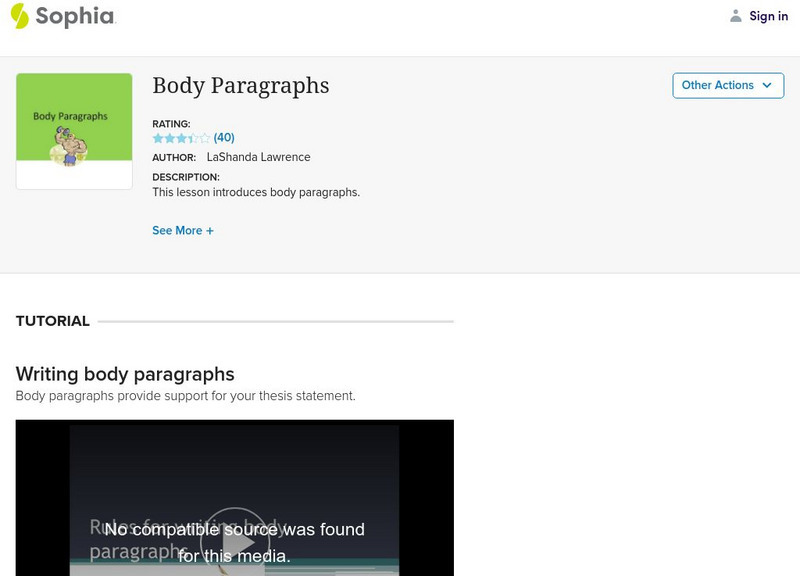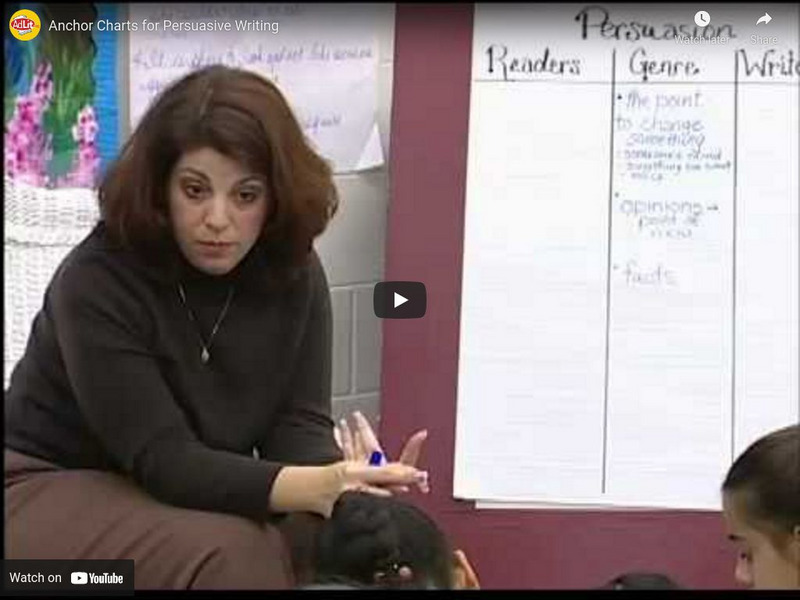Hi, what do you want to do?
Scholastic
Study Jams! Photosynthesis
One friend explains to another that plants combine water and carbon dioxide with the energy of the sun to produce sugar and oxygen. She mentions the roles of the roots, chloroplasts, and stomata in an engaging video that reviews how...
Lit2Go
The Two Fellows and the Bear
How does trust grow between friends, and why is it so important? Aesop's 142-word fable "The Two Fellows and the Bear," addresses the question and challenges readers to think about whether they should trust the friends in their lives. To...
Lit2Go
The Tortoise and the Eagle
Part of a set of fables, Aesop's "The Tortoise and the Eagle" is all about a tortoise that fulfills his dreams and dies in the process of completing them. The activity after the passage asks readers to write an argumentative response...
Lit2Go
The Labourer and the Nightingale
Young negotiators ponder the best arguments to escape captivity after listening to Aesop's "The Labourer and the Nightingale," which tells the tale of a clever songbird who secures his own freedom. They then respond to a writing prompt...
Lit2Go
The Two Crabs
How important is it to lead with example? Part of a larger series of audiobooks, Aesop's 70-word fable "The Two Crabs" is about a mother crab that essentially tells her son to do what she says and not as she does. The writing activity...
Lit2Go
The Fox and the Lion
Can getting to know someone change your opinion of them? After listening to Aesop's fable "The Fox and the Lion," young writers respond with a short literary analysis on the theme of familiarity.
Lit2Go
The Donkey and the Grasshopper
Patience, young grasshopper ... the lesson provides a great experience with narrative writing using an installment from a series of audiobooks of Aesop's Fables. The 57-word passage leads to an engaging activity where your readers argue...
TED-Ed
Should We Get Rid of Standardized Testing?
Did you know that the concept of standardized testing is over 2,000 years old? But what is the purpose of these tests? What do they supposedly measure? A short video investigates the history of standardized tests.
Townsend Press
Argument
Form well-crafted arguments with the help of an educational video. Fourth graders study various examples of persuasive arguments, including thesis statements and cartoons, and observe the ways that supporting details can enhance the...
Townsend Press
Purpose and Tone
A powerful image or well-placed comment always has intention behind it. Guide young readers through author's purpose and tone with a language arts video that explains why word choice is key in writing clearly and coherently.
Andrews McMeel Publishing
POW! A Peanuts Collection
Make a study of Charles M. Scultz's famous comic strip Peanuts in your language arts class. Class members read and discuss the baseball-themed book POW! A Peanuts Collection. After talking about themes and vocabulary, they complete...
Sophia Learning
Sophia: Body Paragraphs
This lesson introduces body paragraphs. [3:41] CCSS.ELA-Literacy.WHST.6-8.2.b
Mind Tools
Mind Tools: Brainstorming: Generating Many Radical, Creative Ideas
Learn how to facilitate both individual and group brainstorming sessions in order to maximize creativity.
Imagine Learning Classroom
Learn Zillion: Plan an Introductory Paragraph for an Informational Text
In this lesson, you will learn how to organize your introductory paragraph by using boxes and bullets. [4:28]
Imagine Learning Classroom
Learn Zillion: Writing a Thesis Statement Expressing the Main Idea
In this lesson, you will learn how to express the main idea by writing a thesis statement. [5:38]
Imagine Learning Classroom
Learn Zillion: Organize Ideas and Evidence for Responding to Constructed Response
In this lesson, you will learn how to organize your evidence by writing supporting paragraphs. [5:31]
Imagine Learning Classroom
Learn Zillion: Write an Introduction to a Constructed Response
In this lesson, you will learn how to write an introduction by building on the thesis statement. [4:58]
Imagine Learning Classroom
Learn Zillion: Writing a Hook Sentence and Introducing a Thesis Statement
In this lesson, you will learn how to begin your response by first hooking the reader and then telling them what you will be arguing. [4:46]
Imagine Learning Classroom
Learn Zillion: State Opinons Worth Supporting
Writers state opinions worth supporting. Let's practice adding a purpose to our opinion. [8:43]
Imagine Learning Classroom
Learn Zillion: Find the Main Idea of a Section of Nonfiction Text
In this lesson, you will learn how to find the main idea of a section of text by anticipating the box and bullets structure as you read a new section. Login gives access to a slideshow and additional videos. [3:21]
AdLit
Ad lit.org: Anchor Charts for Persuasive Writing
A mini video lesson on using an anchor chart to plan a persuasive writing project. At the end of the lesson the students have developed a powerful plan via a graphic organizer to guide them through their writing task.
Imagine Learning Classroom
Learn Zillion: Craft Opinion Statements That Are Debatable
Writers craft opinion statements that are debatable. Let's practice crafting a debatable opinion statement by making sure the statement takes a side and is not a fact. [10:02]
Imagine Learning Classroom
Learn Zillion: Introduce a Topic Clearly
Writers introduce a topic clearly. Let's practice introducing a topic by describing it using background information. [11:51]
Imagine Learning Classroom
Learn Zillion: Focus the Topic of Your Essay by Providing a Clear Introduction
Writers provide clear introductions to engage their readers. Let's practice making sure all the information in the introduction is on topic by eliminating unneeded information. [8:48]




























